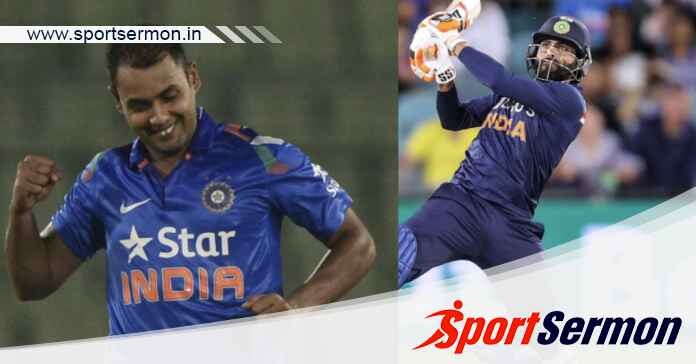Lucky Indian cricketers: A certain amount of work is necessary in sports in order to become a professional athlete. The situation is completely different when it comes to an Indian cricket player. The majority of the 1.3 billion people who live in this nation are passionate about cricket. It is an enormous honour in and of itself to be selected as one of the eleven players to take the field and represent your nation.
Nevertheless, there are instances where certain players are able to compete on the international scene due to an injury or a permanent player’s lack of form. No one’s sentiments are being disparaged or negatively depicted in this work. These are the true tales of sports professionals. Additionally, much like in life, luck can play a role in sports.
Lucky Indian cricketers:
10. Rishi Dhawan:
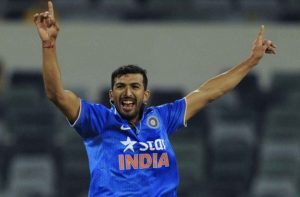
Saying that Rishi Dhawan was well-known to everyone at any point during his career would be incorrect. It would be unfair, though, to argue that he was merely fortunate to be able to represent India. Since that is untrue. His perseverance and hard work have paid off in his game. Having said that, it is worth considering whether or not he was utilized under ideal circumstances.
The narrative starts in early 2016 and ends there. India was looking to add a seam-bowling all-round player to their ODI squad. Having someone at number seven who can contribute with roughly 10 overs and be a useful batsman was the only goal.
Given that Dhawan had been playing for his IPL and domestic team in addition to India A, he was a good fit for this position. However, it is likely that he was not prepared to take over as India’s starting number seven, a position that Ravindra Jadeja skillfully handled in the years leading up to this point.
Three ODIs were awarded to him in Australia, a country that wasn’t the right fit for his bowling style. In the two innings he played, he did not make a significant impact with the bat. Following this series, India discovered Hardik Pandya, and Jadeja received support once more.
Whether you choose to label Rishi Dhawan as fortunate or unlucky, one thing is for sure: unless there was a specific requirement to meet on a particular tour, he would not have played for the nation.
9. KL Rahul:
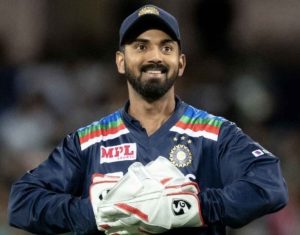
There were a few things that weren’t going well for KL Rahul when he got to the 2019 World Cup. Despite being a frequent scorer in the Indian Premier League, he was unable to secure a spot in the ODI team. In addition, he was dropped from the Test team in late 2018 and later lost his place in the ODI team as well because of the infamous “Koffee with Karan” controversy.
He secured a spot in the World Cup squad with a strong performance in the 2019 Indian Premier League, although the squad’s assignment was not clarified at that time. He eventually batted at number four in the practice games.
His century against Bangladesh in a practice match guaranteed him a spot at number four in the Indian starting lineup. But if Shikhar Dhawan hadn’t been hurt, his luck would have been the same as that of every other Indian no. 4 in the team.
Rahul’s World Cup didn’t start well because he didn’t score a lot in the opening match and didn’t receive more than three balls in the second. Dhawan, however, was able to bat in the top order and succeed because of his injury. He opened the innings in a few more games following the World Cup, which made him nearly unstoppable. Rahul bats down the order at number five and has been a consistent member of the ODI team ever since.
8. Ravindra Jadeja:
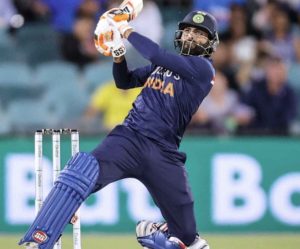
Without a doubt, one of the most significant players in India is Ravindra Jadeja, who nearly always finds a spot in the starting lineup when the India XI is announced. But until a few years ago, this wasn’t the case. Jadeja was removed from the ODI team in 2017 following a string of disappointing results over a long period of time.
Jadeja was very successful in the Test format, but in the ODI format, he was invaluable. Furthermore, following the 2017 Champions Trophy, Hardik Pandya made a huge leap to take the position of seventh in the Indian team. When it came to the white-ball setup, Virat Kohli was in favour of having two leg-spinners, which cost Jadeja his spot. As a result, the Indian team had a shift in their spin culture.
However, that all changed during the 2018 Asia Cup. A mid-tournament injury to Hardik Pandya occurred. Given that the competition was being held in the United Arab Emirates, India could have substituted a spinner for a seam-bowling all-round player. Jadeja scored 4 for 29 in 10 overs in his first game back with the team, aiding India in their victory over Bangladesh.
A few months later, he returned to the Indian domestic cricket team when Hardik Pandya was benched for the Australian series because of the “Koffee with Karan” controversy. Since then, Jadeja has not turned back.
7. Piyush Chawla:
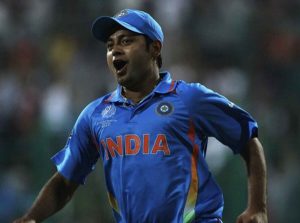
Piyush Chawla made headlines for the first time in 2006 when he excelled at the U-19 World Cup. He was brought up quickly in the Indian team within a year. Why? As a teenager, he had amazed everyone. During India’s 2007 tour of England, Kevin Pietersen had his share of pet peeves, both straight and googlies.
His performance in that series helped him secure a spot on the Indian squad that travelled to South Africa in 2007 for the first-ever T20 World Cup. In India’s opening Twenty20 International match against Scotland, he was expected to make his debut. Sadly, though, the rain forced the cancellation of the game before a ball was bowled. Despite not participating in any of the next six games, he will always wear a T20 World Cup medal around his neck.
Chawla kind of faded away after this tournament, mostly because of her lacklustre performance. In the late 2000s, being a leg-spinner and becoming famous wasn’t a thing. But by controlling his domestic performances, he was able to make the World Cup 2011 squad by eluding a number of up-and-coming spinners and a certain Mumbai batsman (Rohit Sharma, don’t guess too much).
He only participated in three games, which happened to be his final three ODIs. He will, however, undoubtedly retire with two World Cup medals. Perhaps he is the lucky charm that India needs to bring back to improve their record in the ICC tournament’s knockout stages.
6. S Sreesanth:
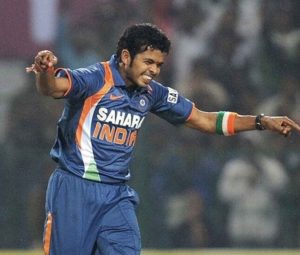
Yes, we are aware that for a few years, S Sreesanth was arguably India’s most aggressive pacer. He was very good, boy! But he also had some good fortune. Furthermore, this has nothing to do with the early stages of his career, when he was bowling Adam Gilchrist and bouncing Jacques Kallis. It concerned the latter portion of his first professional leg. (The second was his career’s bicep; it wasn’t a leg.)
Test squad member S Sreesanth was included prior to the 2011 World Cup. however, not always from the ODI group. He took seven wickets in two One-Day Internationals (ODIs) against New Zealand in November and December of 2010 to maintain his chances of playing. His lack of consistency and economy had always been the issue. However, India didn’t have to worry about that because they had a few pacers they could rely on before the major event.
Both Munaf Patel and Ashish Nehra had resurrected their careers. Praveen Kumar was one of the more intriguing talents, and Zaheer Khan appeared to be in good shape. Sreesanth was excluded from the World Cup team due to the selection of the four pacers.
Regretfully, Sreesanth was substituted for Praveen Kumar due to an injury that prevented him from playing. He participated in just two games. the first game versus Bangladesh and the last ODI, which was played against Sri Lanka. He didn’t take a wicket in 13 overs while bowling, giving up 105 runs.
5. Varun Aaron:
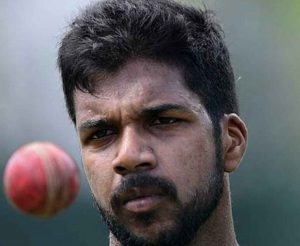
Varun Aaron is an interesting case for many cricket experts. When he first appeared, he was swift, and as we speak, he’s probably still running in the yards and bowling quickly. However, his career has been as peculiar as India’s experimentation with fast bowling between Zaheer Khan and our current pacer brigade.
About the same time as Umesh Yadav, Aaron became well-known. Compared to other domestic bowlers at the time, both were nimble and quick. Pacers who can bowl at 145 kmph are uncommon in India, and when they are, they are quickly promoted into the Indian squad. Some go on to become Ishant Sharma, while others pursue careers more akin to Aaron’s.
Aaron played nine Test matches between 2011 and 2015, but he was never really consistent in his play. If he had been a batter instead of a bowler, he would have made his father proud by taking 18 wickets at an average of 52.61. He participated in a comparable amount of ODIs, but nothing particularly noteworthy. In his nine ODIs, he had an economy of 6.61, while in his Test career, it was 4.77.
4. Stuart Binny:
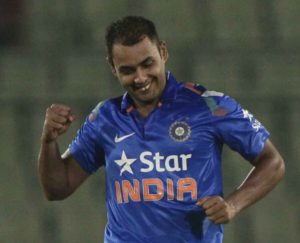
In 2014, Stuart Binny made his India debut. It would be incorrect to claim that his inclusion in the Indian team was solely determined by chance. However, there are a few things that people need to know in order to comprehend why he participated in 14 ODIs and 6 Tests. First of all, he was an all-around seam bowler. Additionally, MS Dhoni, being MS Dhoni, loves a seam-bowling all-round player because India is India.
They have bat skills. They are bowling capable. Also, they are able to lead their group to victory. They are able to offer the ideal balance. Regretfully, Binny did none of that during his career in India. Indeed, he currently holds the record for the best bowling figures ever recorded by an Indian in cricket history. (I’m not even sure how to feel about that. All I can say is that, on the day this occurred, Bangladesh played incredibly poorly.)
Stuart’s father, Roger Binny, served on the BCCI national selection committee from 2012 to 2015. In 2015, Stuart participated in his final Test match; in 2016, he played his final Twenty20 international. However, these two things are undoubtedly unrelated. Stuart was a decent cricketer, though.
At a time when Vijay Shankar was not a three-dimensional player and Hardik Pandya had not yet been discovered by the Ambanis, he was fortunate to have accomplished something that was uncommon in his nation and received high praise from the national captain.
3. Vijay Shankar:
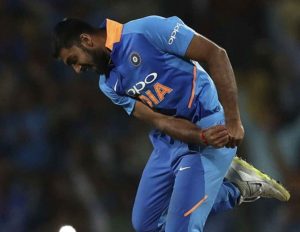
From one hostile all-rounder who bowls seams to another. Stuart Binny and Vijay Shankar share a few similarities. They are both Southerners. They are both lower-order bats. Both are capable seam bowlers who were selected for a World Cup in which they had limited playing time.
If a book is ever written about “3D and the use of its term in India,” Shankar’s story will undoubtedly be included in one of the chapters. A page, perhaps. or perhaps a para. Perhaps even a single line would suffice. The fact that Shankar was assigned as a 10-over bowler in a few of India’s matches before rising to the position of fourth in the subsequent series illustrates the farcical nature of the team selection process that preceded the 2019 World Cup.
As it happened, he was also India’s fourth-best player, a good fielder, Hardik Pandya’s ally, and the 3D player the team had been searching for. All of that was prior to the World Cup. He participated in three games. a few runs were scored. took two wickets in the match with Pakistan. required a few catches. suffered an injury during practice. returned to India in the middle of the 2019 World Cup, and he didn’t play another game for India after that. It all depends on your point of view, luck or not.
2. Shivam Dube:
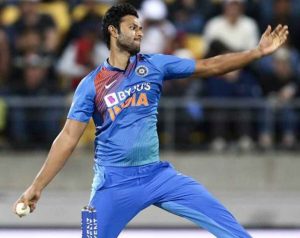
There will be enough players to fill another list of fortunate cricketers who have represented India if you begin compiling a list of players who have represented the country simply because they are capable of doing a little bit of both. If Vijay Shankar and Stuart Binny were unusual, Shivam Dube’s choice is truly ridiculous. And when I say that, I don’t mean to imply that he is inadequate or horrible.
Because the team management does not define their roles, some players almost always end up with this kind of career. Shivam Dube is among those players, too. He only played a little bit of cricket for India because he batted a little bit better than others and had an action that somewhat mimicked what cricket experts might refer to as “seam bowling.”
Due to Hardik Pandya’s injury, Dube also participated in the Indian team. Pandya was a seam-bowling all-round player who batted at number seven and typically bowled the entire ten overs. The team management simply wanted someone who could perform the same tasks after Hardik was hurt. Dube represented India in one Twenty20 international and one One ODI, but it didn’t appear like he would get another chance anytime soon.
1. Kedar Jadhav:
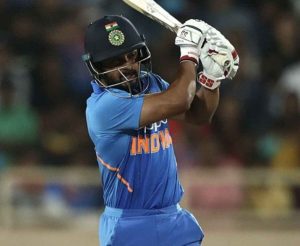
In white-ball cricket, Kedar Jadhav has exceptional batting ability. Additionally, his first-class numbers are not too bad. In actuality, his ODI statistics indicate that he has a strike rate of 101 and an average of 42. For someone who has played 73 One-Day Internationals for his nation, these are pretty respectable stats.
Even so, he might not be remembered for his career because he didn’t receive many noteworthy knocks. However, he played for a considerable amount of time. He was a handy batsman in the lower order and could bowl a few overs, so many critics may have thought he played a lot more matches.
It’s interesting to note that during the time he was playing, the only player in India’s top 6 who could possibly fill in as a sixth bowler was him. Consider the days when Sourav Ganguly was in charge; he had constant access to temporary workers. Next was Dhoni, who could also use Suresh Raina as a sixth bowler. Jadhav wasn’t the right kind of sixth bowler. However, he played more than 70 games for his country and gave his batting a lot of importance despite having poor skill at it.
So, this was all about the lucky Indian cricketers. Also read, Top 10 unlucky Indian cricketers that went unnoticed!

